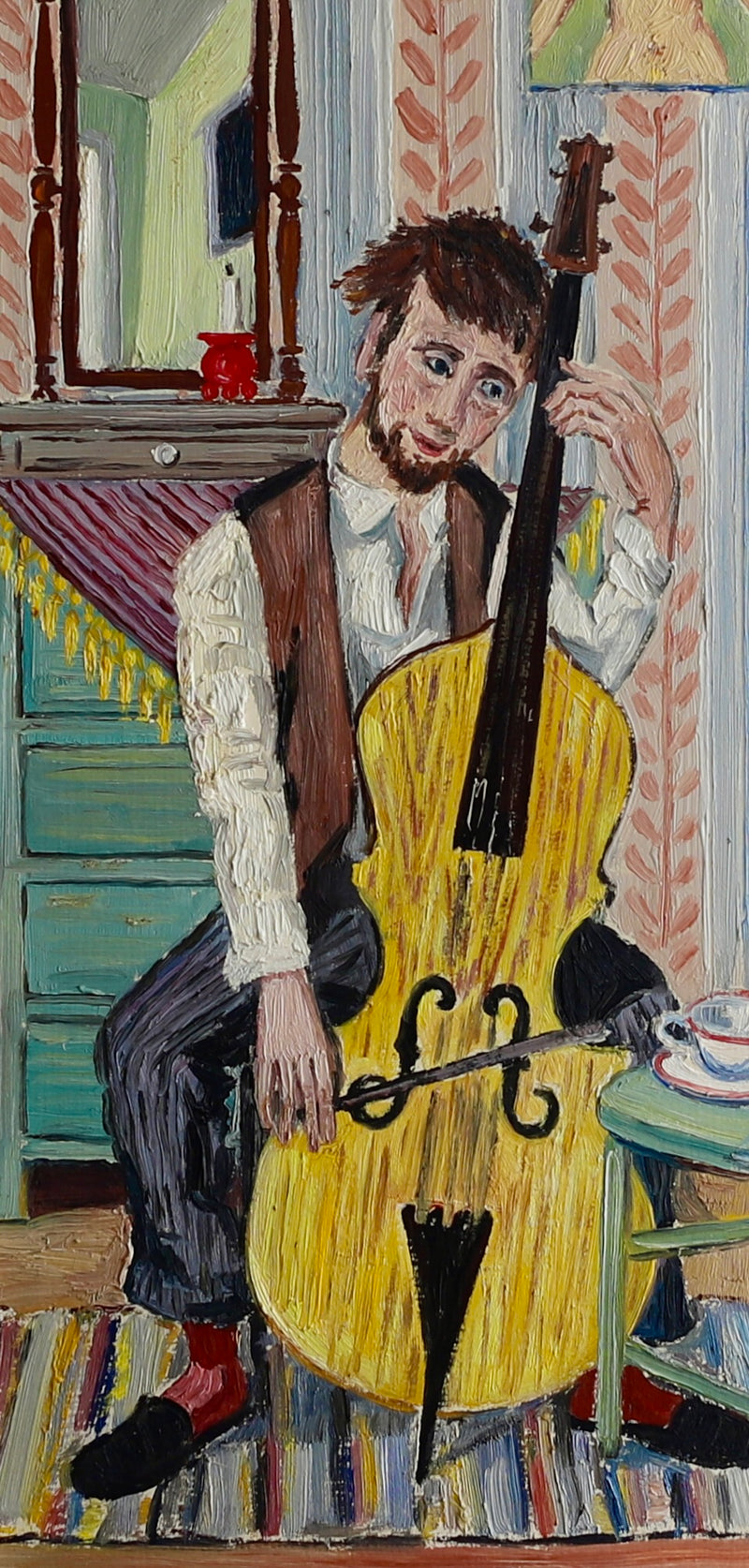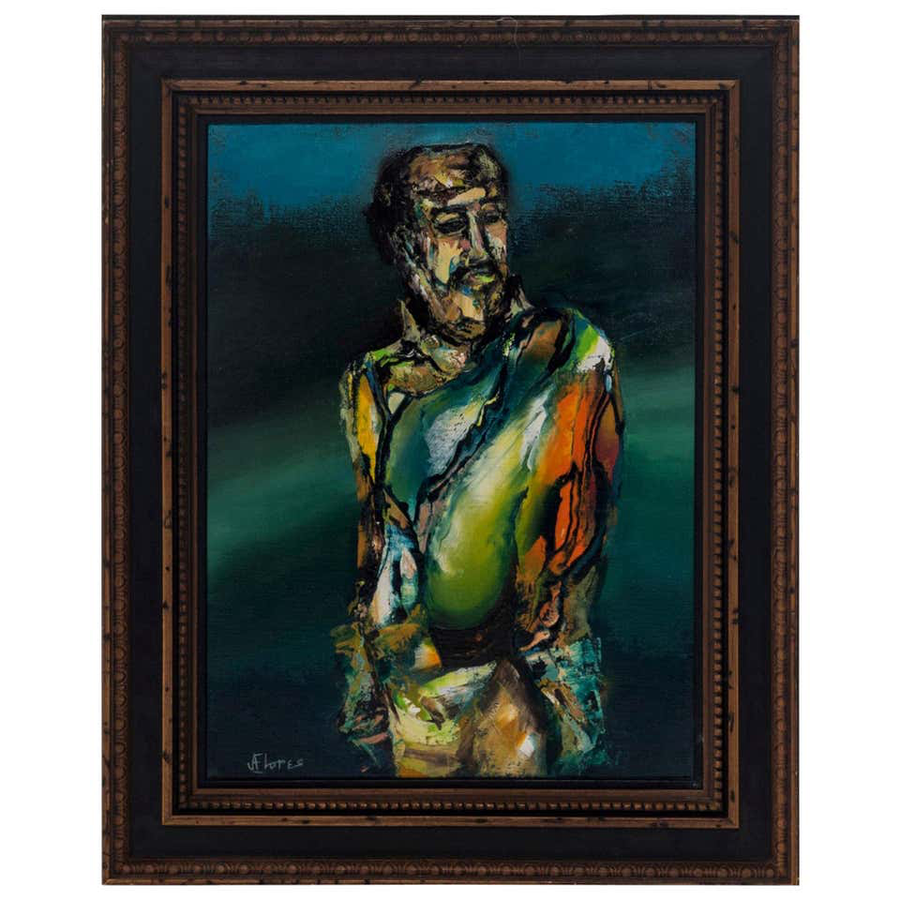Checking Out Iconic Artists and Their Influences on Figurative Oil Painting
Checking Out Iconic Artists and Their Influences on Figurative Oil Painting
Blog Article
The Development of Metaphorical Oil Painting: Comprehending Its Historical Significance and Modern Interpretations
The evolution of metaphorical oil painting acts as a compelling lens where to examine the interplay between creative expression and historic context. From the thorough naturalism of the Renaissance to the stirring power of the Baroque, each age has actually added layers of meaning and strategy to this timeless medium. Contemporary musicians, attracting from this rich heritage, are currently reinterpreting the human figure in means that challenge standard stories. As we check out these changes, one should take into consideration just how the dialogue in between past and present informs not just artistic method yet also social reflections in a progressively intricate world.
Origins of Figurative Oil Painting
The origins of figurative oil paint can be traced back to the very early Renaissance in Europe, specifically in the 15th century. The development of oil paint enabled for better deepness of shade and detail, improving the realistic look and vibrancy of their job.

In this transformative era, figures were frequently shown within contextually abundant environments, showcasing not just their physical features yet additionally their emotional states. Pioneers such as Jan van Eyck and Titian used the tool's versatility, utilizing layering methods to attain luminosity and texture. This technology assisted in the portrayal of detailed fabrics and the subtleties of complexion, adding to the growth of portraiture and narrative scenes.
Furthermore, the Renaissance emphasis on humanism promoted an admiration for individualism, which in turn affected artists to create more relatable and dynamic numbers - figurative oil painting. As an outcome, figurative oil painting became a powerful automobile for storytelling and emotional interaction, laying the groundwork for future creative motions and designs
Trick Historical Motions
Significant historical activities have actually formed the development of figurative oil painting, each adding special ideologies and strategies that increased the medium's opportunities. The Renaissance noted an essential moment, highlighting realism and the human kind, with artists like Leonardo da Vinci and Michelangelo pushing the borders of physiological precision and viewpoint. Following this, the Baroque period brought dramatic contrasts of light and shadow, exhibited by Caravaggio, that instilled religious styles with intense emotionality.
The 19th century introduced Romanticism and Realistic look, where artists such as Delacroix and Courbet tested timeless perfects, concentrating on private expression and day-to-day life. The advent of Impressionism even more revolutionized the medium by emphasizing the results of light and shade, leading to a departure from standard depiction.
In the very early 20th century, movements like Expressionism and Cubism redefined figurative paint via abstraction and the expedition of psychological deepness. Each of these activities not just reflected the social adjustments of their times yet also prepared for contemporary analyses. The interaction in between these historic motions has actually developed an abundant tapestry of designs and ideologies, affecting contemporary artists in their pursuit of recording the human experience on canvas.
Strategies and Materials Development

Throughout the Baroque duration, techniques such as chiaroscuro and sfumato arised, enhancing the emotional resonance of figurative structures. Musicians started to experiment with lusters and impasto, manipulating texture and luminosity. By the 19th century, advancements like using pre-mixed paints in tubes revolutionized ease of access, enabling artists to repaint en plein air and catch the short lived results of light.
The 20th century witnessed the intro of artificial pigments and mediums, which expanded the scheme find more information and altered the uniformity of oil paints. In addition, the expedition of new application techniques, such as scheme knives and brushes of varying rigidity, further varied artistic expression. Jointly, these improvements reflect the developing partnership in between products, methods, and the artistic vision inherent in figurative oil paint.

Contemporary Interpretations
Contemporary analyses of metaphorical oil paint reflect a vibrant discussion in between tradition and advancement, where musicians test established norms and check out varied motifs. This advancement manifests in different methods, as contemporary musicians mix classical methods with contemporary principles, often resolving social, political, and individual narratives.
Several specialists draw inspiration from historical works, yet they instill their items with modern viewpoints, making use of the human form as a car for commentary on culture, gender, and identification. Artists progressively try out abstraction, distortion, and multimedias, which allows for a more comprehensive analysis of the figure and its context.
In addition, the usage of brilliant color schemes and unique make-ups typically offers click to disrupt typical checking out experiences, provoking essential interaction from audiences. This shift in emphasis extends past visual appeals; it mirrors an expanding awareness of the complexities of human experience in an interconnected globe.
As figurative oil painting proceeds to evolve, it stays an essential medium for discovering the nuances of contemporary life, symbolizing both a regard for heritage and a commitment to progressive idea. The result is a rich tapestry of expression that resonates with the complexities of the modern human condition.
Impact on Modern Art
The impact of figurative oil paint on modern-day art is extensive, as it has constantly inspired a myriad of imaginative activities and methods throughout the 20th and 21st centuries. From Expressionism to Surrealism and past, the exploration of the human figure has actually remained a main style, allowing musicians to communicate intricate emotions and stories. This focus on figurative depiction has brought about a re-examination of standard techniques, causing innovative techniques that blend realism with abstraction.
Moreover, modern musicians have actually welcomed metaphorical oil paint as a way to resolve social and political problems, making use of the tool to test perceptions of identification, sex, and society. The revival of passion in figurative operate in current years mirrors a longing for connection in a progressively electronic world, where human experience and emotion are paramount.
Furthermore, the dialogue between figurative oil painting and modern-day art is evident in the works of artists such as Kehinde Wiley and Jenny Saville, who draw on historical recommendations while infusing their pieces with modern importance. Inevitably, metaphorical oil paint remains to form and redefine modern-day creative expression, underscoring its enduring value in the art world.
Conclusion
The development of metaphorical oil paint underscores its historical value and flexibility across various imaginative movements. Eventually, figurative oil painting stays a vital medium for discovering the human experience, resonating exceptionally in today's electronic landscape.
The development of metaphorical oil paint serves as an engaging lens via which to take a look at the interaction between artistic expression and historical context.Considerable historical movements have formed the development of metaphorical oil painting, each adding special approaches and techniques that increased the tool's opportunities.As historic activities shaped these details the trajectory of figurative oil painting, the techniques and products used by artists have likewise gone through significant transformations. figurative oil painting.The impact of metaphorical oil painting on modern-day art is extensive, as it has continuously inspired a myriad of creative movements and techniques throughout the 21st and 20th centuries.The evolution of metaphorical oil paint highlights its historic importance and flexibility across different artistic motions
Report this page